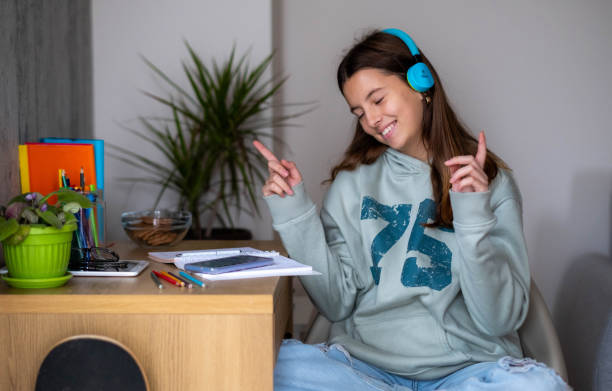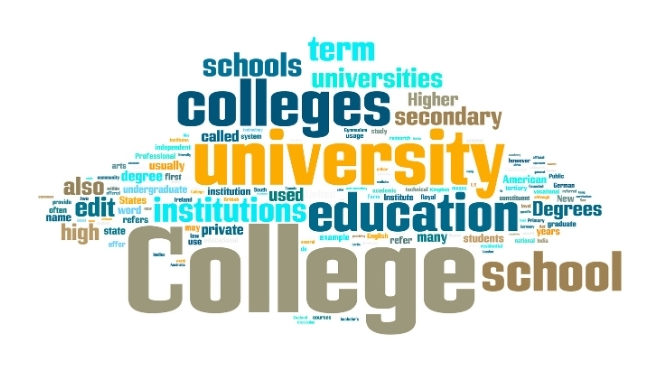
How Your Learning Style Can Work in an Online Class
Posted by
We all have our favorite ways to learn. Some of us prefer to read or listen and take notes as we go. Others like talking through concepts to help wrap their brains around them. Some of us pace while memorizing vocabulary lists or math formulas. We may create songs and poems to help remember important information. Or we do whatever the task is alongside the person teaching it.
Knowing your learning style can help you perform better in school. The same holds if you decide to take an online course or bootcamp.
If you’re an introverted student, you may find it simpler (and less stressful) to express yourself through online communication versus in a traditional classroom. Online learning naturally allows for a more flexible approach to teaching, which can benefit those who don’t learn best in a step-by-step, linear manner. Online learning environments excel when they foster teamwork and align with how many students learn naturally.
Learning style types
When people talk about the traditional learning styles, they’re often referencing the VARK model developed by Neil Fleming. It refers to “visual, auditory, read/write, and kinesthetic” learners. But we can break down learning styles even more.
Auditory
Auditory, or aural-musical, learners perform best in environments where they can learn through hearing and listening. They process and retain information most effectively when it’s presented through sound, speech, or music. These students often exhibit strong listening skills, making them adept at understanding spoken instructions and lectures — and they tend to have an excellent memory for information they’ve heard.
Auditory learners thrive in discussions, enjoy verbal communication, and might even talk or whisper to themselves while reading to help internalize the material. Often sensitive to sounds and music, this learning style may excel at remembering song lyrics or playing instruments. The best learning strategies? Listening to lectures, podcasts, and audiobooks, actively participating in discussions, reading material aloud, and using rhymes or songs to memorize information.
Interpersonal
Students with an interpersonal or social learning style thrive on interaction and communication with others to understand and process new information. These “people persons” learn most effectively in collaborative environments, enjoying activities like group projects, discussions, and debates. They’re often natural leaders, possessing strong communication skills and an intuitive understanding of others’ perspectives, which allows them to “read” people well and navigate social situations with ease.
Dialogue, peer mentoring, and shared perspectives accelerate knowledge transfer for interpersonal learners, who feel energized and motivated when engaging with their peers. They excel when they can verbalize their thoughts, receive feedback, and teach others, although they may struggle or feel less engaged when asked to work on solo projects or in isolated settings.
“Some students need that social spark to stay engaged — that’s where interpersonal learners shine,” said Justin Goldsberry, CEO and founder of Goldsberry Management Group, LLC, who also serves as a backbone lead for the Obama Foundation’s My Brother’s Keeper Alliance in NJ. “Online courses that build opportunities for connection make all the difference, like breakout rooms where students can swap ideas after a lesson, group chats to keep projects moving, or virtual mock trial-style debates where they take sides and learn to see other perspectives.”
Intrapersonal
An intrapersonal, or solitary, learning style is characterized by students who excel when working independently and are highly reflective. Unlike social learners, these students prefer to process new information internally, spending time contemplating and analyzing concepts on their own before sharing their thoughts. These learners are often self-motivated, very independent, and possess strong time-management skills, thriving in quiet environments where they can focus without distractions.
People with this dominant learning style tend to be introspective, aware of their own strengths and weaknesses, and may gravitate toward activities like journaling to explore their thoughts and feelings. Success comes from setting personal goals, engaging in self-study, and having the space to learn at their own pace.
Kinesthetic
Kinesthetic or physical-tactile learners are students who learn most effectively through hands-on experiences, tactile interactions, and physical movement. They process information best when they can physically interact with it, rather than simply seeing or hearing it. These students are often super energetic, have excellent hand-eye coordination, and may struggle to sit still for long periods, needing to fidget or move their bodies to stay focused.
Those with this learning style love hands-on activities, experiments, role-playing, and any experience that allows and encourages them to use their bodies or manipulate objects to understand a concept. For kinesthetic learners, the act of physically engaging with the material — building models, conducting experiments, even writing notes repeatedly — solidifies their understanding and improves retention.
Linguistic
Linguistic, or verbal, learners excel at processing and expressing information through the spoken and written word. Students with this learning style have a strong affinity for language in all its forms, whether reading, writing, listening, or speaking. These students often have an impressive vocabulary, enjoy learning new words, and grasp concepts effectively through lectures, discussions, and text-based materials.
Linguistic students tend to be skilled communicators and naturally good at articulating their thoughts. These learners may enjoy storytelling, debating, and learning new languages. When they can engage with the material through reading, taking notes, summarizing information in their own words, or discussing concepts with others, these students perform well.
“As someone who loves reading and writing,” said Goldsberry, “I know how helpful reading, writing, and reflecting can be for making sense of new ideas. These students do well when online learning includes opportunities to write things out, answer reflection questions, keep a journal, or share thoughts with others.”
Logical
Logical or mathematical learners dominate at reasoning, identifying patterns, and understanding abstract concepts through logic. These students learn most effectively when information is presented in a structured, sequential, and rational manner, and instructors invite them to make connections and solve problems systematically.
Students with this learning style often enjoy working with numbers, puzzles, and strategies; they ask “why” questions to understand a topic’s underlying principles. Logical learners flourish when asked to classify, categorize, and identify cause-and-effect relationships, thereby becoming adept at analysis and critical thinking. When these learners can apply rules, use deductive reasoning, and organize information into clear, logical frameworks, their understanding deepens.
Visual
Students who have a predominantly visual or spatial learning style understand and remember information best when they can see it. They process new concepts most effectively through images, diagrams, charts, maps, videos, and other visual aids. Visual learners often have a strong sense of direction and a good eye for aesthetics, and can easily recall faces and places.
They do best when teachers present information graphically, allowing them to visualize patterns and relationships. Drawing pictures, using color-coding, creating mind maps, watching demonstrations, and even writing notes with different colored pens can significantly enhance their comprehension and retention.
Not sure what your learning style is? Try NC State University’s “Index of Learning Styles” questionnaire. You may discover that you have more than one learning style.

Finding an online class that complements your learning style
Online programs and courses aren’t one-size-fits-all. Knowing your dominant learning style can help you choose the right virtual class.
In a nutshell
Dr. Emily Levy, founder and director of EBL Coaching, said that kinesthetic learners do well in classes involving hands-on learning, like a program with science labs, drawing, or cooking. Auditory learners should choose courses that involve listening to lectures and speaking via class discussions and oral presentations. Online programs in languages, music, and history might appeal. Visual learners should choose an online class that has plenty of visual diagrams, charts, or pictures — a class in art, design, architecture, or geography, for example. Text-based classes that incorporate lots of writing and reading (and fewer lectures) may appeal more to reading/writing learners. Students with an interpersonal learning style should choose classes that incorporate plenty of group projects and encourage collaboration with peers rather than solo learning.
Let’s break it down by learning style
Auditory learning style
Look for online courses that incorporate plenty of audio-based resources and opportunities for verbal interaction. Content-rich audio can include recorded lectures, podcasts, audiobooks, and text-to-speech options. Opportunities for verbal interaction might include:
- Live discussions and Q&A sessions: Webinars and group calls offer a platform for asking questions, sharing thoughts, and clarifying information.
- Group projects and collaborative assignments: Working with others allows auditory learners to engage in discussions and conversations that reinforce learning and understanding.
- Oral presentations: Presenting material verbally helps auditory learners solidify their understanding and practice their speaking skills.
- Verbal feedback: Receiving audio feedback on assignments makes the experience more personal and engaging.
Online courses that naturally lend themselves well to discussion and debate include history, literature, philosophy, foreign languages, and public speaking. Technical subjects like music production or digital audio engineering would be a good fit as they also involve working with sound.
Interpersonal learning style
Students with an interpersonal or social learning style should choose an online course or program that prioritizes interaction and collaboration. It should offer discussion forums and interactive activities. Collaborative learning activities could include:
- Group projects: Interpersonal learners thrive in group work, which allows them to collaborate, learn from their peers, and use their communication and leadership skills.
- Peer review activities: Look for courses where students can provide constructive feedback on each other’s work.
- Real-time interaction: Courses that use video conferencing, webinars, or chat features for synchronous meetings and discussions create a more immediate sense of connection.
- Study groups: Some online programs facilitate the creation of virtual learning pods where students can collaborate and provide mutual support.
Online courses that naturally involve teamwork and communication, such as leadership development, social studies, debate, coding boot camps, and career exploration, could be a good fit.
Intrapersonal learning style
Solitary learners do well when they can go at their own pace. Someone with this learning style should look for courses that offer independent learning (asynchronous), pre-recorded video or lecture-based instruction. Online courses that appeal to intrapersonal learners may minimize group work and discussions, encouraging participants to work through ideas independently. These courses should provide clear expectations and structure to help these students manage their learning effectively.
Online courses encouraging introspection and individual exploration, like philosophy, psychology, creative writing, advanced research projects, or self-improvement and wellness courses, would be well-suited for these learners.
Kinesthetic learning style
Kinesthetic learners should look for online classes that incorporate interactive elements, movement, and simulations. Classes that incorporate game-like elements, role-playing, and challenges can engage students who learn through this learning style. Coding and software development courses, which require hands-on interaction with software and physical manipulation of code, might be a good fit, too.
Other potential online courses might include STEM courses with virtual labs or DIY kits (biology, chemistry, physics, engineering), arts courses in drawing, painting, sculpting, crocheting, jewelry making, graphic design, or stop-motion animation, or even dance classes or acting workshops with improvisation or role-playing elements.
Linguistic learning style
Linguistic learners have a natural aptitude for language and do well in online courses that lean heavily into the written and spoken word to deliver instruction and request evidence of understanding and mastery. Online courses could include:
- Live classes with interactive discussions for real-time engagement and feedback.
- Breakout rooms for group work
- Online discussion boards or forums
- Ample reading materials (articles, eBooks) and writing assignments (essays, creative writing projects)
- Recorded lectures or podcasts
- Multimedia resources like videos and music
Ideal online programs could include literature, creative writing, journalism, debate, and foreign languages.
Logical learning style
Logical learners appreciate structure, problem-solving, systems, and order, particularly when it comes to dealing with numbers and patterns. They enjoy dissecting complex ideas into sequential steps. Look for an online course that:
- Emphasizes logic and reasoning
- Offers clear structures and step-by-step learning
- Involves problem-solving and application
- Uses interactive and analytical tools
- Offers flexibility, self-paced options, and plenty of opportunities to practice independently and collaboratively
Options for online programs include mathematics, business, computer science and programming, logic and critical thinking, debate, and branches of philosophy. Courses involving data analysis, statistics, cybersecurity, or engineering design may also appeal.
Visual learning style
Visual learners do best when they can see information presented in different ways. Look for an online course that leans heavily into visual elements, like videos, diagrams, charts, graphs, or images. Other hallmarks of a virtual course where a visual learning style thrives include:
- Multimedia resources like interactive simulations and virtual tours
- Tools and strategies for visual learning, like mind mapping features or graphic organizers
- Live or recorded demonstrations or step-by-step visual guides
Online courses abound for people with this learning style. Check out graphic design, digital art and animation, web design and UI/UX design, photography and videography, architecture, interior design, biology, anatomy, astronomy, and mapping and geographic information systems. In other words, the sky’s the limit.

Lean into your learning style and soar in your online class
Whether you favor one learning style or several, here are some tips to help you achieve your goals and do well in an online class.
Auditory learner
Pay attention to spoken content. Listen to recorded lectures — maybe even during a walk or while doing chores. Use browser extensions that can read course materials, articles, and your notes aloud. After reading a module or completing a section, record yourself summarizing the key points to play back and listen to later. Don’t just type in chats; use your microphone to ask questions, contribute to discussions, and explain your understanding. Talk through challenging concepts to yourself, a pet, or a willing family member or friend to solidify your knowledge.
Interpersonal learner
Initiate new threads, ask clarifying questions, and offer thoughtful feedback on your peers’ posts. Organize video calls with classmates for collaborative study sessions, project work, or discussing course material. Seek out and offer constructive feedback on assignments. Participate actively in synchronous class meetings, engaging in Q&A sessions, breakout rooms, and group activities. Volunteer for or actively seek out group projects, leveraging your natural ability to work with others.
Intrapersonal learner
Designate a quiet space where you can focus deeply without external interruptions. Break large assignments into smaller, more manageable steps and set your own internal deadlines to maintain motivation and progress (especially in asynchronous courses). After each module or topic, journal, write reflective notes, or think about what you’ve learned and how it connects to and builds on your existing knowledge. Take advantage of online learning’s flexibility to review material multiple times at your own pace until you feel completely confident.
Kinesthetic learner
Instead of typing, handwrite your notes, draw diagrams, or create flashcards. Create models, use manipulatives (even everyday objects) to represent abstract concepts — or pace around while memorizing. Schedule short, regular breaks during study sessions to stand up, stretch, walk around, or do a quick physical activity to reset your focus. Engage with virtual labs, interactive simulations, or online tools that allow you to “do” or manipulate elements. When possible, find ways to physically apply what you’re learning. Need to fidget? Use a stress ball, fidget cube, or discreet movements that help you concentrate without distracting others (if you’re in a live session).
Linguistic learner
Go deep into textbooks, articles, lecture notes, and discussion board posts, highlighting key phrases and concepts. Rephrase information in your own words to cement your understanding. Contribute thoughtfully in online discussions. Summarize chapters or models in your own words — try teaching the concepts you’re learning to someone else. Create digital or physical flashcards. Use online grammar checkers (like Grammarly) and style guides (like Hemingway) to refine your written communication.
Logical learner
When you’re learning a new concept, actively try to identify the underlying logic, patterns, and cause-and-effect relationships. Structure your notes and understanding using logical outlines, flowcharts, and diagrams that show connections and sequences. Break down complex problems into smaller, logical steps and document your thought process. Don’t just memorize facts; seek to understand the “why” behind the concepts. Look for opportunities to apply theoretical knowledge to practical scenarios.
Visual learner
If practical, print out text-based materials and use highlighters and different colored pens to create visual cues and hierarchies (or paste the content into a Google doc and use the highlighter tool). Transform text into mind maps, concept maps, diagrams, flowcharts, and sketches to represent information visually. Use color-coding for your notes, folders, and digital files to help with visual organization. Watch video demonstrations or tutorials in addition to reading instructions, when available.
Understanding your learning style, aligning it with the online course, and using effective study strategies can help you optimize and gain even more from your learning experience. So, embrace your unique learning preferences and watch your confidence and academic performance soar in the virtual classroom.
Blog Categories
- Career Advice
- College Admissions
- Colleges & Universities
- Financial Aid and Scholarships
- For Counselors
- For Parents
- For Students
- Gap Years
- Mental Health and Wellness
- Online Learning
- Performing and Visual Arts
- STEM Majors and More
- Summer Programs
- Teen Volunteering
- Trade & Vocational Schools
- Tutoring & Test Prep

Organization with listings on TeenLife? Login here
Register for Free
We’re here to help you find your best-fit teen-centered academic and enrichment opportunities.
Forgot Password
"*" indicates required fields








